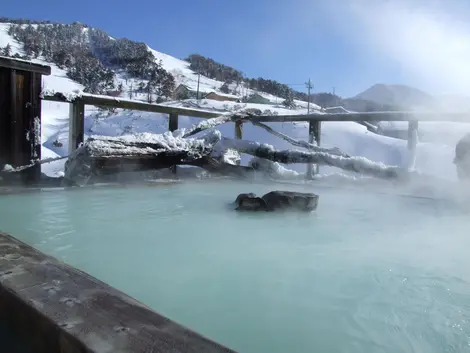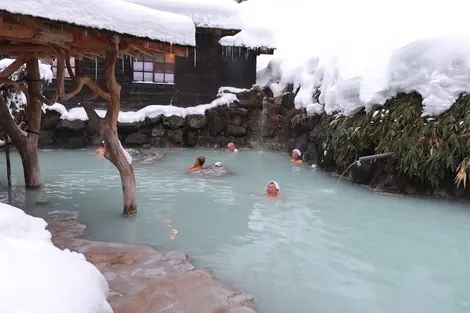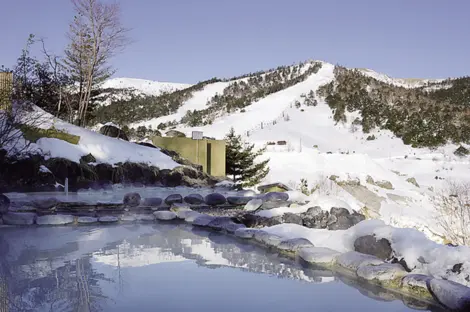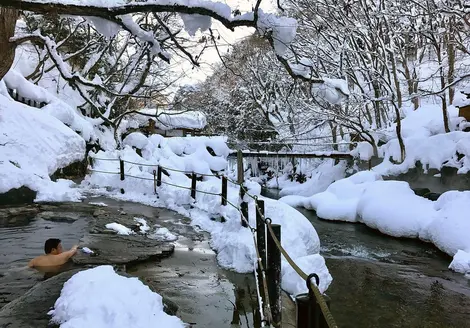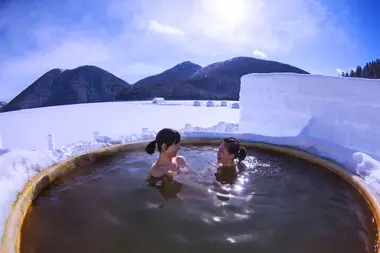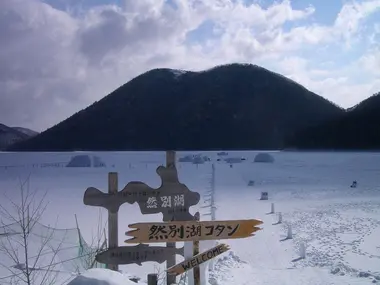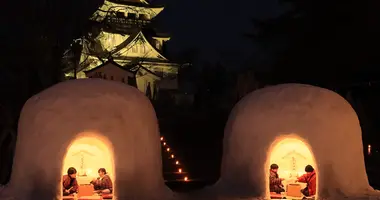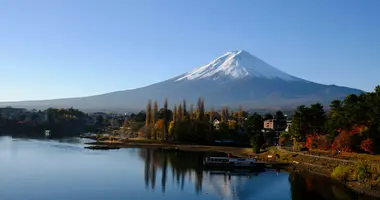The best rotenburo in winter
Winter in Japan offers a unique experience: that of immersing yourself in a rotenburo, an outdoor thermal bath, while contemplating a snow-covered landscape. This ancient tradition allows you to enjoy the benefits of natural hot springs while connecting with the country's winter beauty. Let's discover together the best rotenburo to visit during the cold season, their unique features and the precautions to take to enjoy them to the full. Get ready for an unforgettable moment of relaxation in the heart of the Japanese winter.
What is a rotenburo and why enjoy it in winter?
A rotenburo (露天風呂) is an outdoor thermal bath fed by a natural hot spring of volcanic origin. Unlike indoor onsen, rotenburo offer a unique outdoor bathing experience, whatever the season. In winter, they become particularly attractive for several reasons:
Firstly, the striking contrast between warm water and cold air creates an incomparable sensation. Imagine being immersed in water at 40°C, while the surrounding air is well below zero! This thermal shock, known as "yukimi-buro" (literally "bathing while looking at the snow"), is not only pleasant but also beneficial to your health.
What's more, rotenburo often offer spectacular views of snow-covered landscapes. Whether facing snow-covered mountains, beside a frozen lake or in the heart of a frosty forest, the natural setting adds a contemplative dimension to the experience. This communion with nature in winter is deeply rooted in the Shinto religion, which places great importance on harmony with the environment.
The most beautiful rotenburo to discover in winter
Here is a selection of the most remarkable rotenburo to visit in winter in Japan:
1. Shikaribetsu-ko Onsen (Hokkaido): Located on frozen Lake Shikaribetsu in Daisetsuzan National Park, this ephemeral rotenburo is part of an ice village built every winter. The experience is unique: you bathe in 40°C water surrounded by walls of ice, with a 360° view of the icy landscape.
2. Nyuto Onsen (Akita): This spa village at the foot of Mount Nyuto is home to several ryokan with their own rotenburo. The most famous is Tsurunoyu Onsen, whose milky waters contrast magnificently with the surrounding snow.
3. Manza Onsen (Gunma): Perched at an altitude of 1,800 meters, this rotenburo offers breathtaking views of the snow-capped mountains. Its sulfurous waters, reputed to be among the strongest in Japan, promise exceptional therapeutic benefits.
4. Takaragawa Onsen (Gunma): With its four huge outdoor baths totaling 700m², this rotenburo offers a grandiose experience. The mixed baths border a frozen river, creating a spectacular winter landscape.
5. Shirahone Onsen (Nagano): Nestled in the Japanese Alps, this rotenburo is famous for its sparkling white waters. The contrast with the surrounding snow creates an almost unreal atmosphere.
Practical tips for enjoying rotenburo in winter
To make the most of your rotenburo experience in winter, here are a few essential tips:
1. Hydrate well: Drink plenty of water before, during and after the bath to avoid dehydration. The heat of the bath and the cold outside can quickly dry out your body.
2. Enter the water gradually: The temperature contrast can be brutal. Start by splashing yourself with warm water (ashiyu) before entering the bath slowly, to avoid thermal shock.
3. Limit your bathing time: Don't stay in hot water for more than 15-20 minutes, especially if it's your first time. Get out if you feel dizzy or nauseous.
4. Bring warm clothes: After the bath, your body will need to warm up quickly. Bring a yukata (light kimono) and warm clothes for after the bath.
5. Follow etiquette: Follow onsen rules of conduct, such as washing before entering the bath and not dipping your towel in the water.
Benefits of outdoor bathing in cold weather
Winter rotenburo are not only a pleasant experience, they also offer numerous health benefits:
1. Stimulation of blood circulation: The contrast between warm water and cold air stimulates circulation, which can relieve muscle and joint pain.
2. Immune system boost: Alternating hot and cold can stimulate the immune system, helping you to better resist winter illnesses.
3. Stress reduction: The combination of relaxing warmth and soothing winter scenery can significantly reduce stress and anxiety.
4. Improved quality of sleep: A warm bath at the end of the day can promote deeper, more restful sleep.
5. Mineral benefits: Thermal waters are rich in minerals beneficial to the skin and general health. Each spring has its own unique composition, offering specific benefits.
Unique experiences: rotenburo with a view of the snow
Some rotenburo offer particularly unique experiences in winter:
1. Shikaribetsu ice bath: In this ephemeral rotenburo built on a frozen lake, you can alternate between a hot bath and a quick dip in a hole dug in the ice for an invigorating experience.
2. Stargazing at Manza Onsen: At an altitude of 1,800 meters, this rotenburo offers a breathtaking view of the starry winter sky, far from any light pollution.
3. Midnight bath at Takaragawa Onsen: Open 24 hours a day, this rotenburo lets you bathe under the stars, surrounded by glistening snow in the moonlight.
4. Forest bath at Nyuto Onsen: Immerse yourself in a rotenburo surrounded by a snowy forest, with steam rising around you in perfect silence.
5. View of Mount Fuji at Hottarakashi Onsen: Although not mentioned above, this rotenburo offers a breathtaking view of snow-capped Mount Fuji, particularly spectacular at sunrise.
Where to find the best winter rotenburo in Japan
The best winter rotenburo can be found mainly in Japan's mountainous regions:
1. Hokkaido: Japan's northernmost island offers numerous rotenburo in a spectacular winter setting. In addition to Shikaribetsu-ko, don't miss Noboribetsu Onsen, famous for its bubbling "hells".
2. Tohoku region: The prefectures of Akita (Nyuto Onsen) and Yamagata (Ginzan Onsen) are renowned for their traditional rotenburo in picturesque snowy landscapes.
3. Japanese Alps: Nagano and Gifu prefectures are home to numerous mountain rotenburo, perfect for relaxing after a day's skiing. Discover the Okuhida Onsen region in particular.
4. Kanto region: Close to Tokyo, Gunma prefecture offers renowned rotenburo such as Manza Onsen and Takaragawa Onsen.
5. Kyushu: Although further south, the island of Kyushu offers unique rotenburo experiences in winter, notably at Kurokawa Onsen in Kumamoto prefecture.
To explore these different regions and their rotenburo, don't hesitate to rent a car with Japan Experience to discover Japan from the inside.
Precautions for winter outdoor swimming
Although the rotenburo experience in winter is wonderful, it's important to take certain precautions:
1. Avoid alcohol before bathing: Alcohol dilates blood vessels and can increase the risk of discomfort in warm water.
2. Watch out for ice: The areas around the rotenburo can be slippery. Walk carefully and use the shoes provided by the establishment.
3. Protect your head from the cold: Wear a cap or towel over your head to avoid cooling down too quickly when you get out of the bath.
4. Listen to your body: If you feel dizzy, nauseous or uncomfortable, get out of the bath immediately and rest.
5. Check for contraindications: Certain medical conditions may be incompatible with hot baths. Consult your doctor if in doubt.
In conclusion, rotenburo in winter offers a unique experience combining relaxation, well-being and connection with Japan's winter nature. Whether you choose the frozen lake baths of Hokkaido or the white-water springs of the Japanese Alps, you're in for an unforgettable experience. Don't forget to follow the safety and etiquette guidelines to fully enjoy this age-old Japanese tradition. So, are you ready to dive into the winter rotenburo adventure?
For more inspiration on winter experiences in Japan, discover our selection of the five best onsen for winter and our complete dossier on winter in Japan, a wonderful forgotten season.





